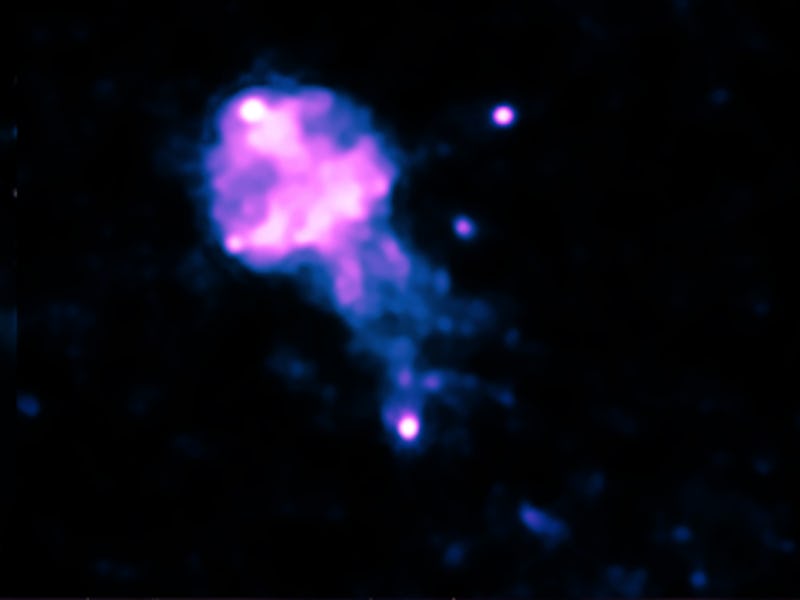
This squishy looking purple blob resembles a jellyfish floating around in the deep sea — it’s a highly magnetized rotating pulsar zipping through the Milky Way.
The image was captured by NASA’s Chandra X-ray Observatory, a gliding telescope in Earth’s orbit tasked with observing high emitting objects like this pulsar in the universe’s hottest regions. Earth’s atmosphere absorbs X-ray light, so Chandra must orbit 86,500 miles above the planet to see these signals in space.
This purple pulsar, named B0355+54, is a composite of X-ray data from Chandra and infrared data from NASA’s Spitzer Space Telescope. The composite shows the umbrella-like structure of the pulsar, the head of which is the neutron star. The tails streaming off of it consist of highly charged particles of dust and gas coming off the star as it zips through the atmosphere — hence scientists call this phenomena a pulsar wind nebula. B0355+54’s trails extend about five light years across. An illustration below shows what they believe the pulsar might look like.
B0355+54 looks like a jelly fish in the deep sea.
B0355+54 was accompanied by another, duller pulsar named Geminga. Geminga consists mostly of gamma rays, while B0355+54 has the highest radio emissions, making the latter the brightest of any known pulsar to date.
An illustration of B0355+54 shows it's long wind nebula.
These sibling pulsars are actually very similar. They each have magnetic poles (much like Earth) that allow them to spin rapidly through the galaxy. Between those poles, they each have an equator which emits radio and gamma rays. Those rays are then emitted in waves, like pulses, across the galaxy, which is why Chandra was able to pick up on the star’s location. B0355+54 is viewed at face value from Chandra, whereas Geminga was drifting away, showing two very different vantage points of these magnificent stars.
Geminga glids alongside B0355+54 in the Milky Way.
Scientists will be studying the shape and origins of these structures to better explain the presence or absence of radio and gamma-ray pulses from these systems.
This illustration of Geminga shows where the gamma and x-rays are emitted from the star.